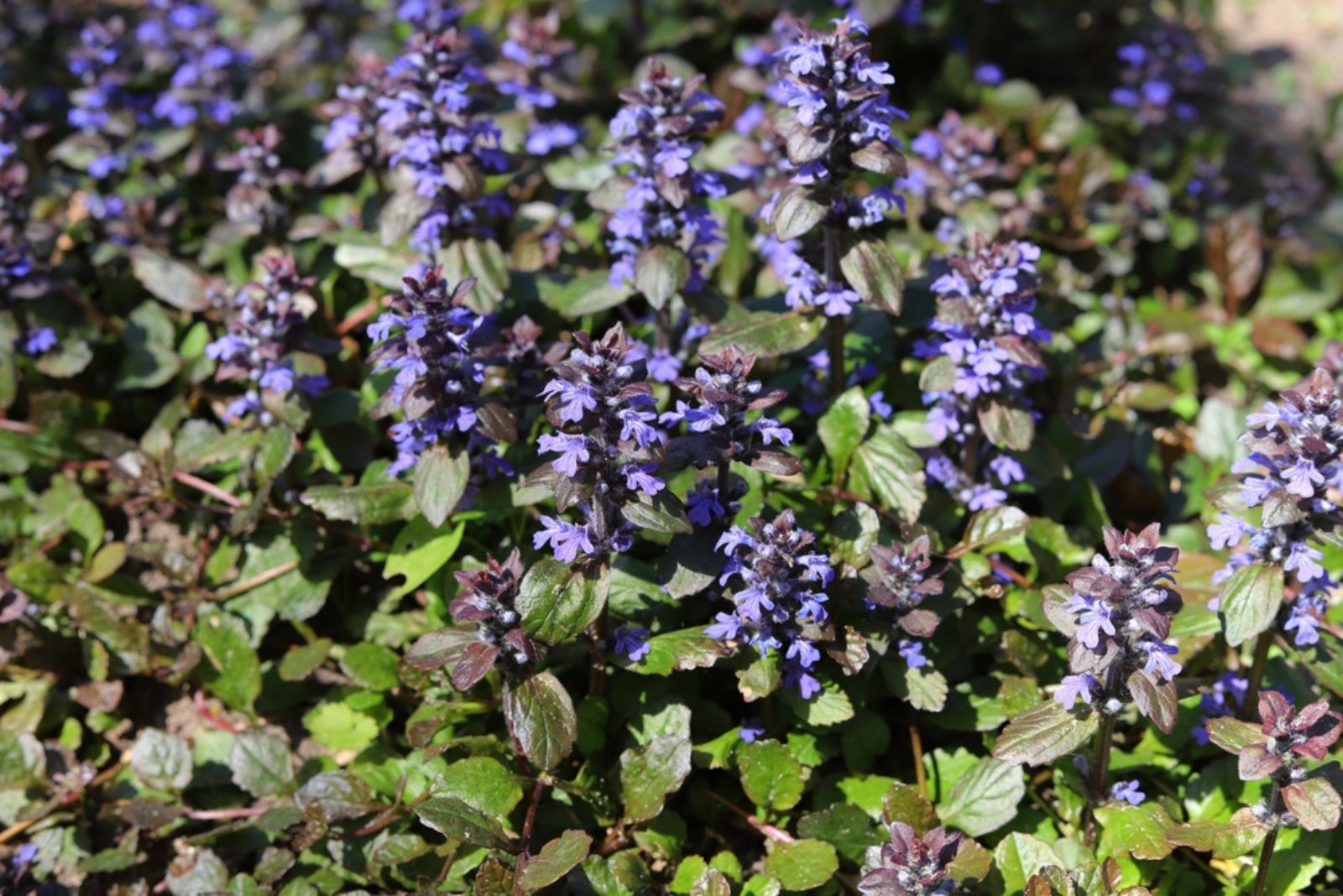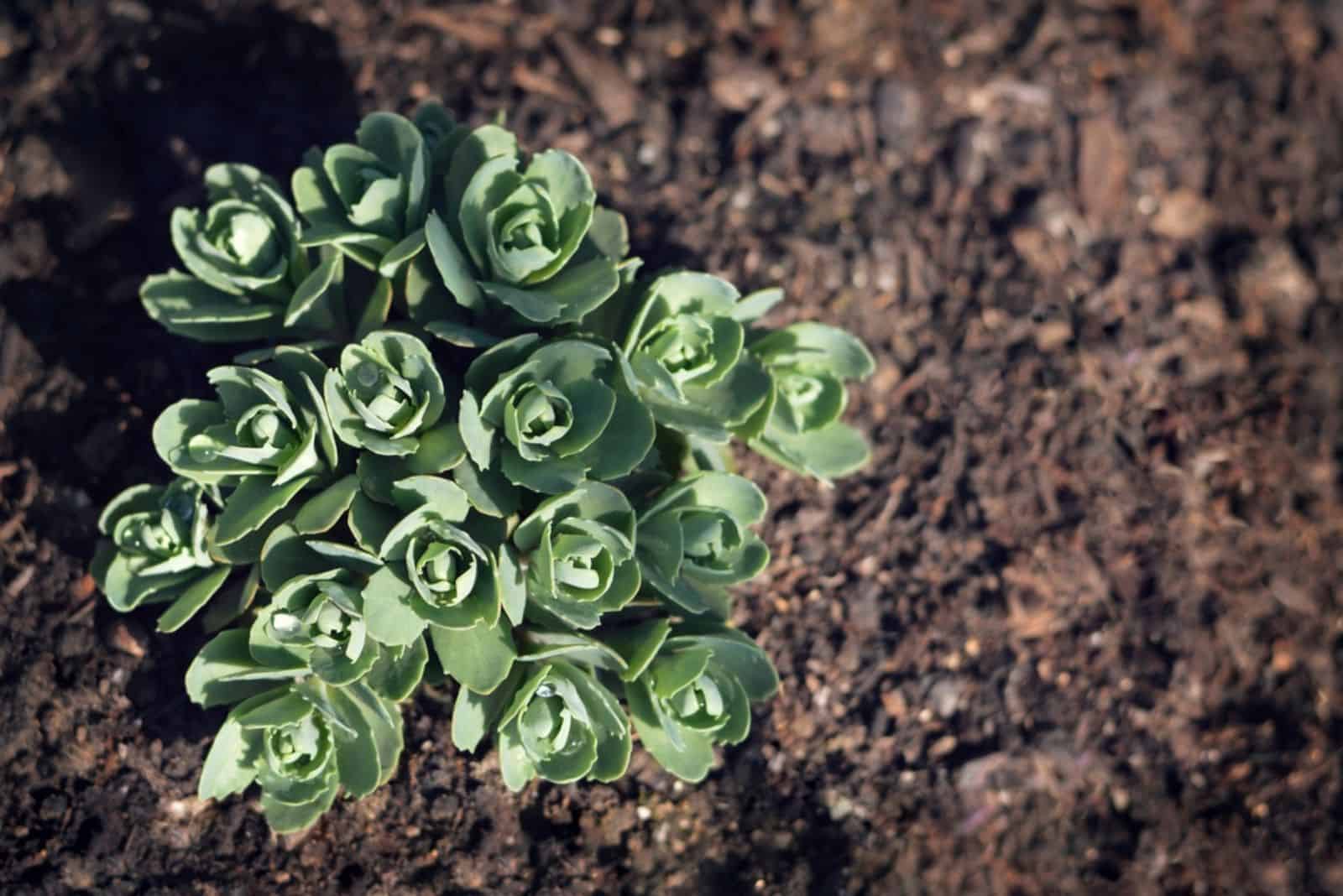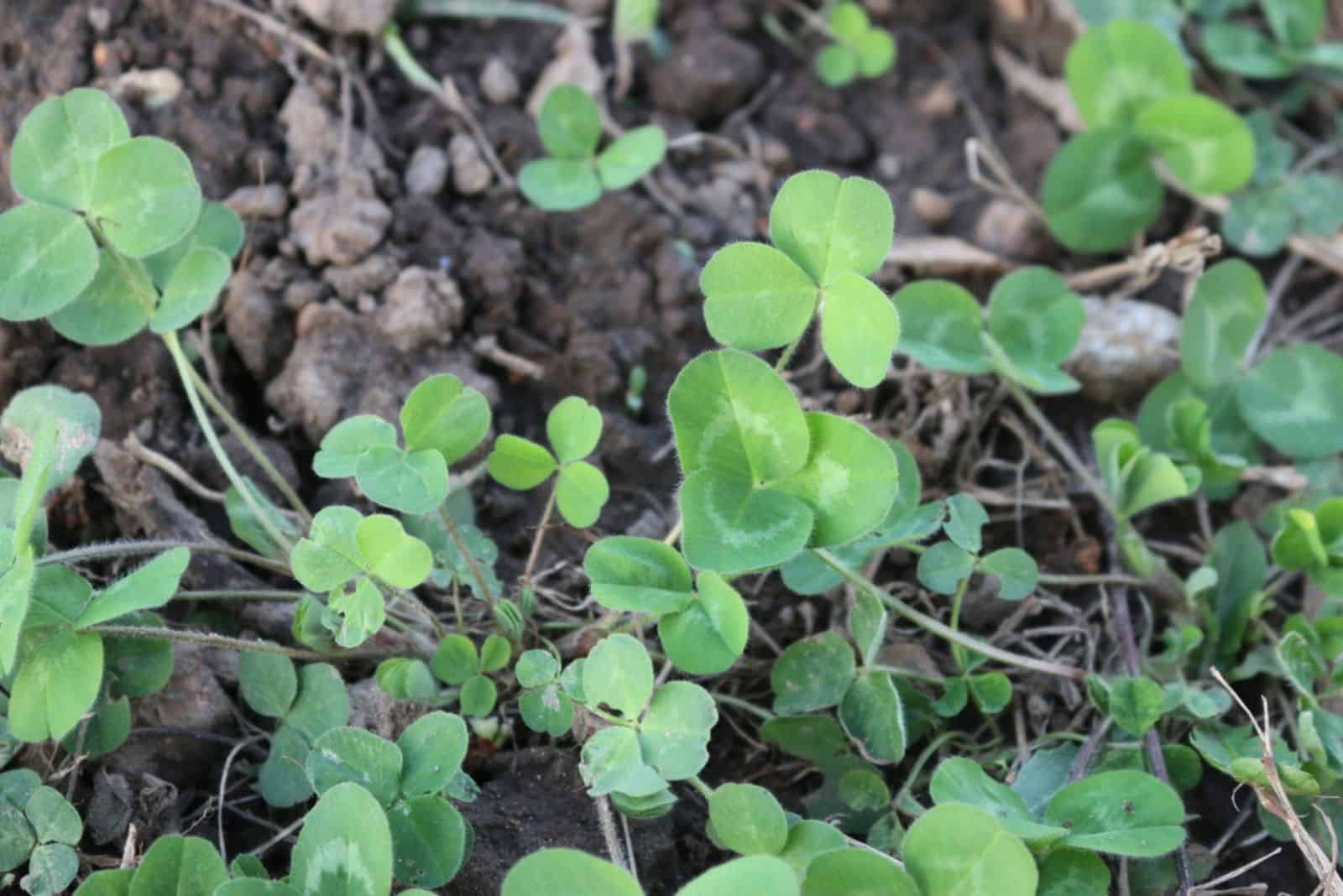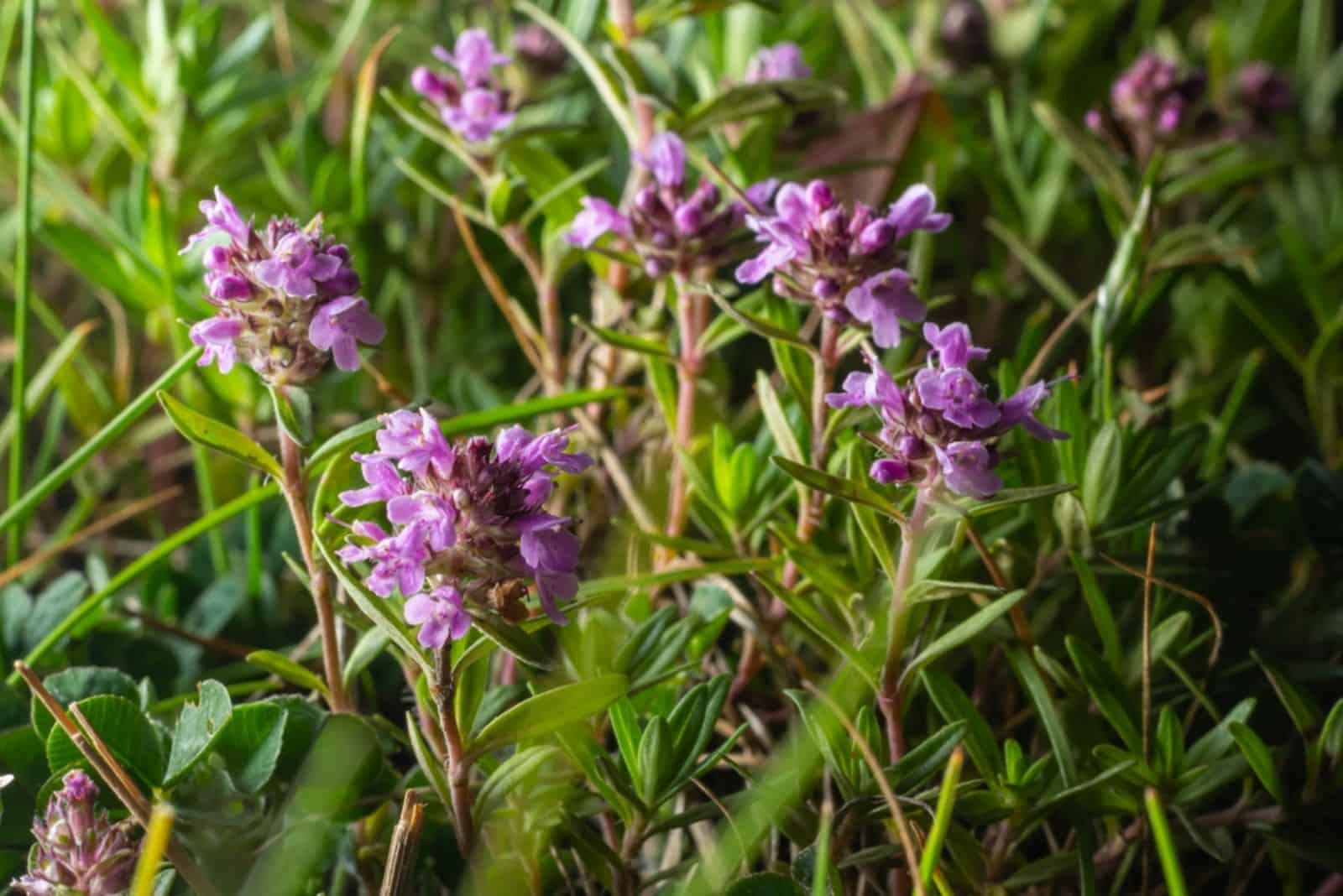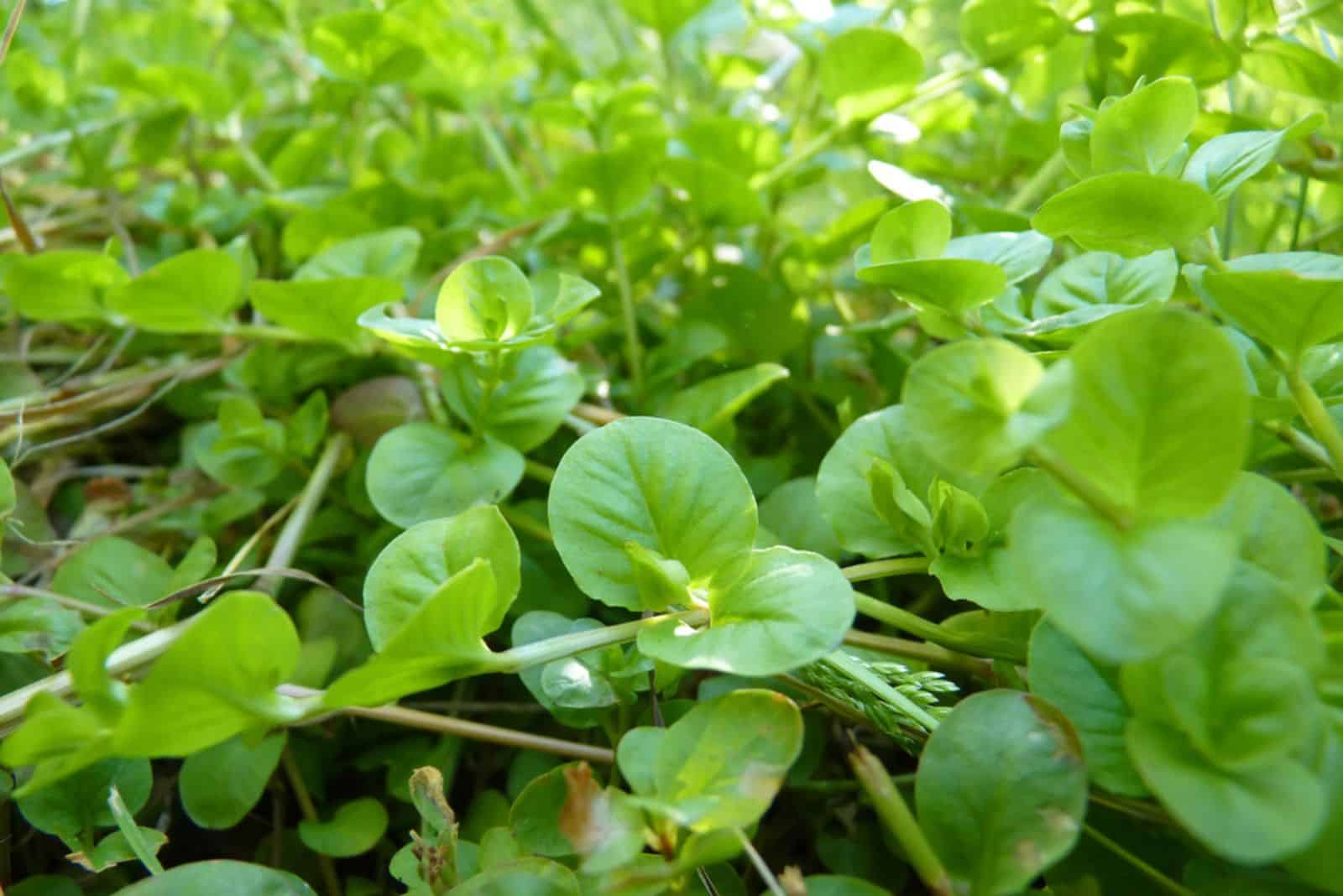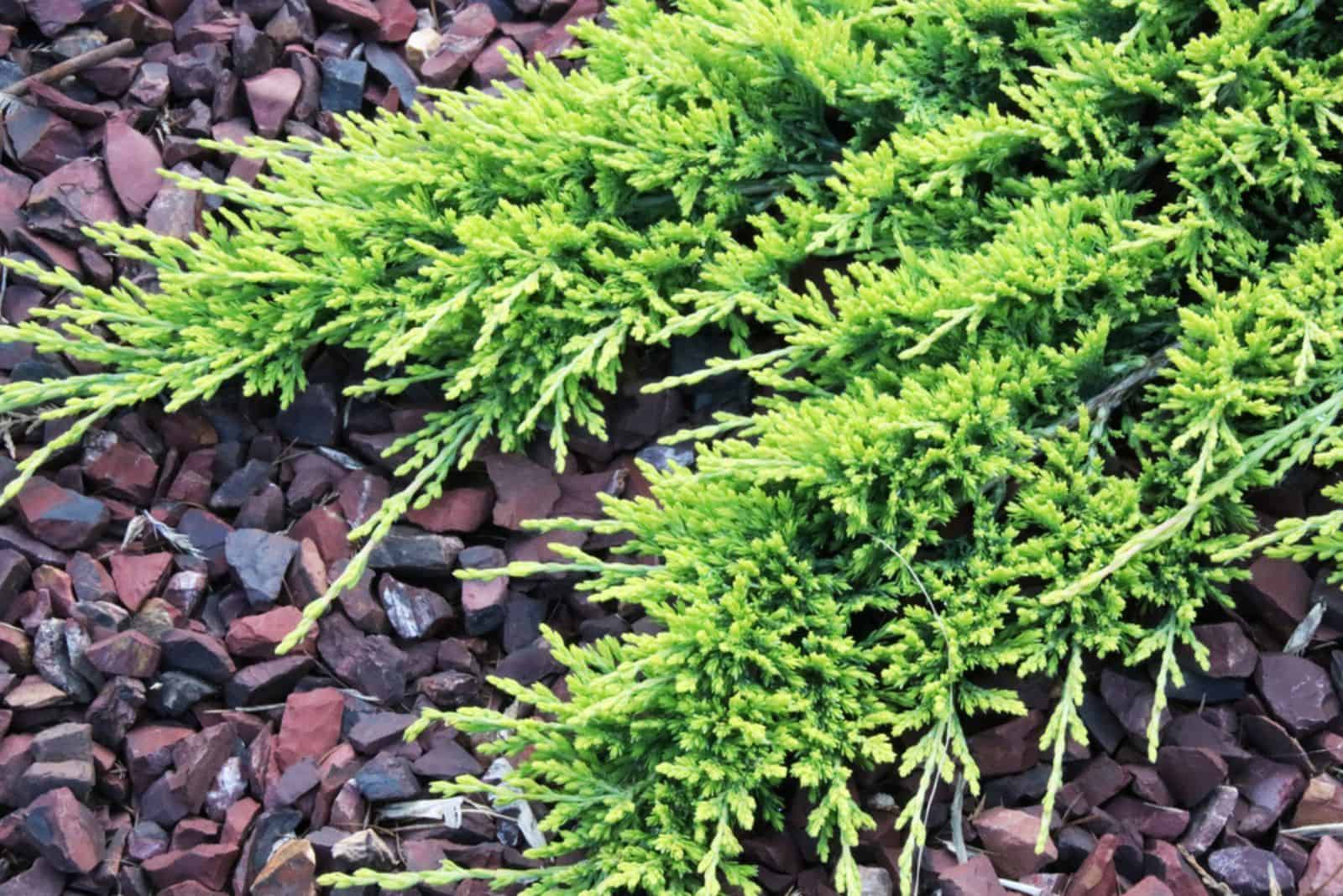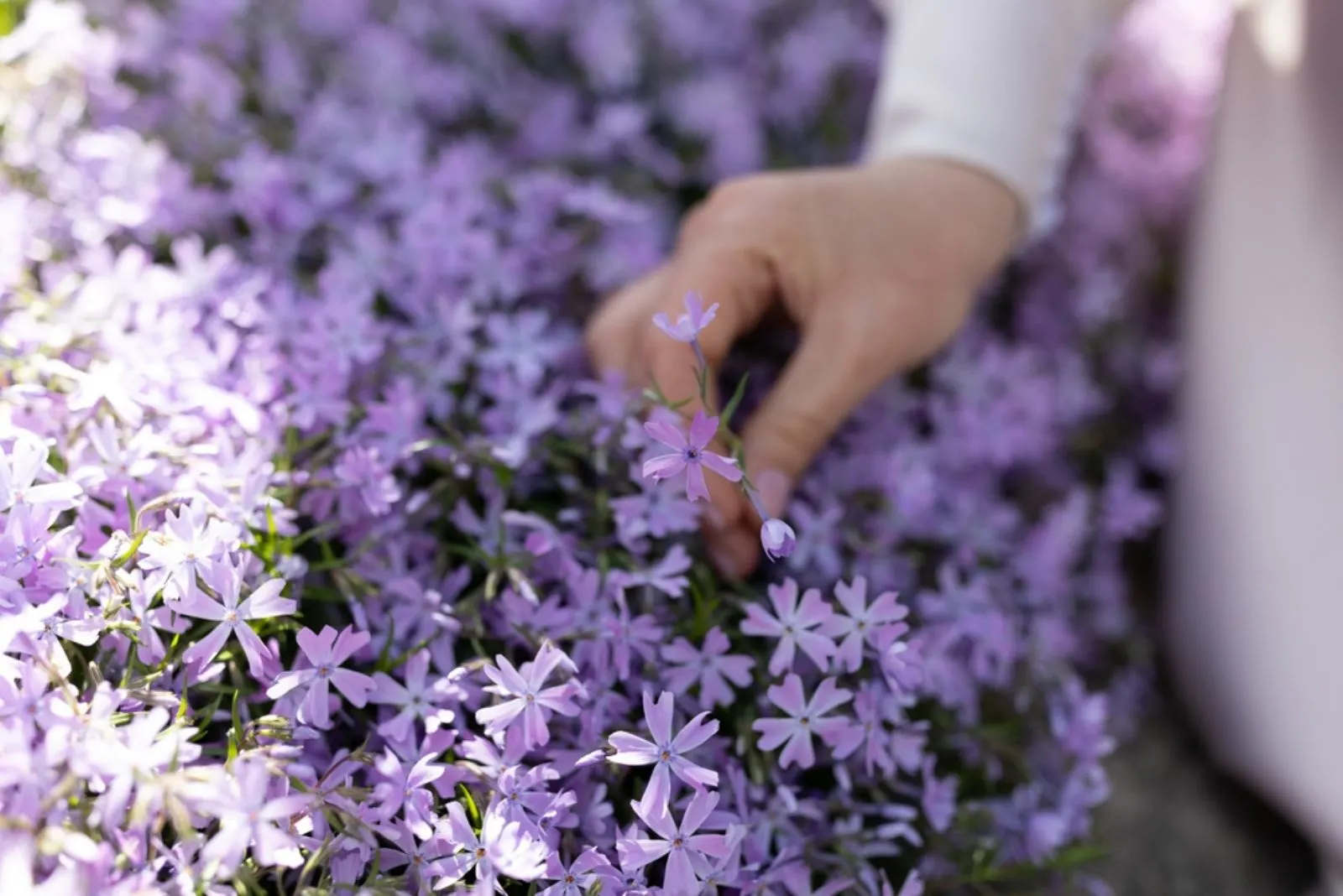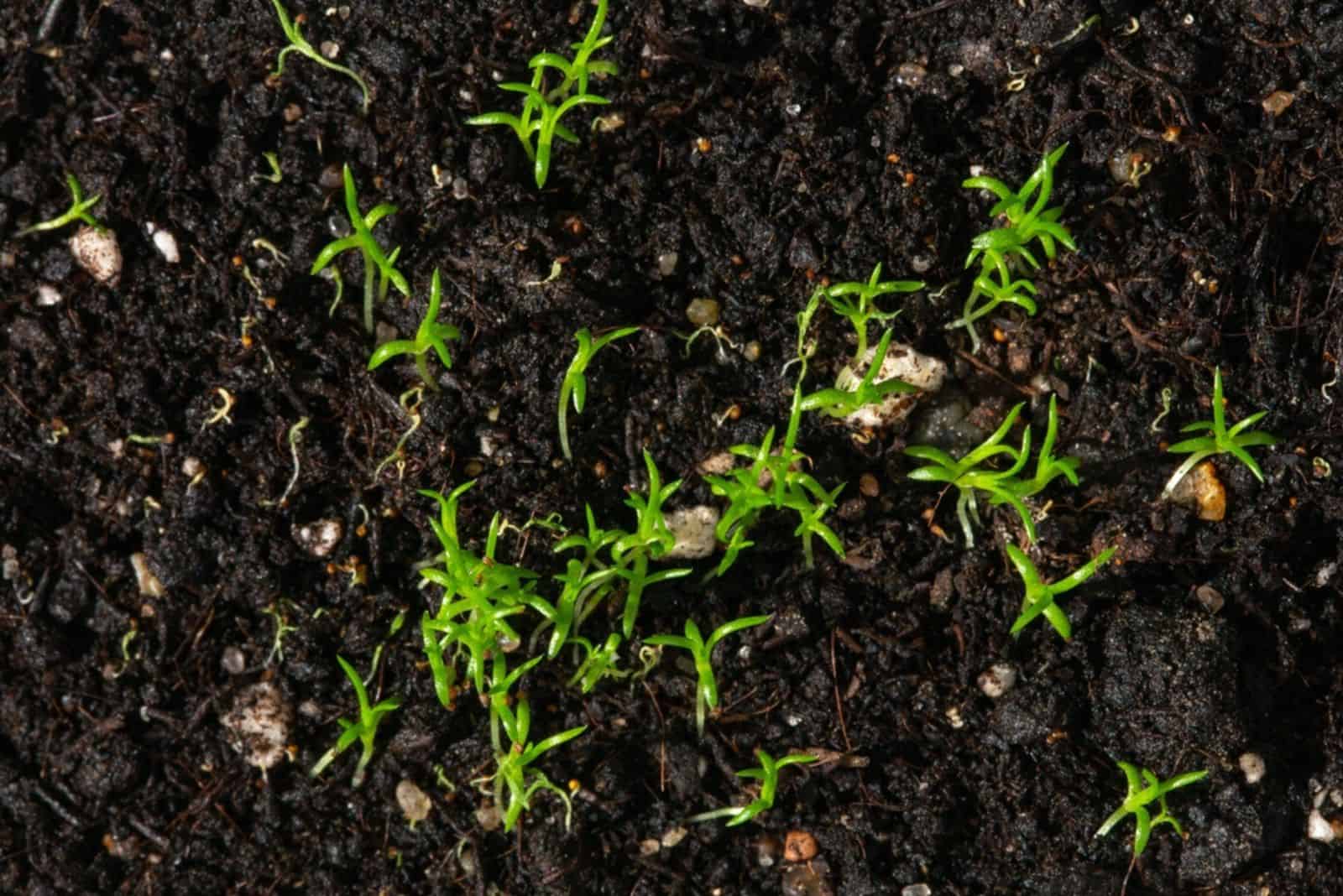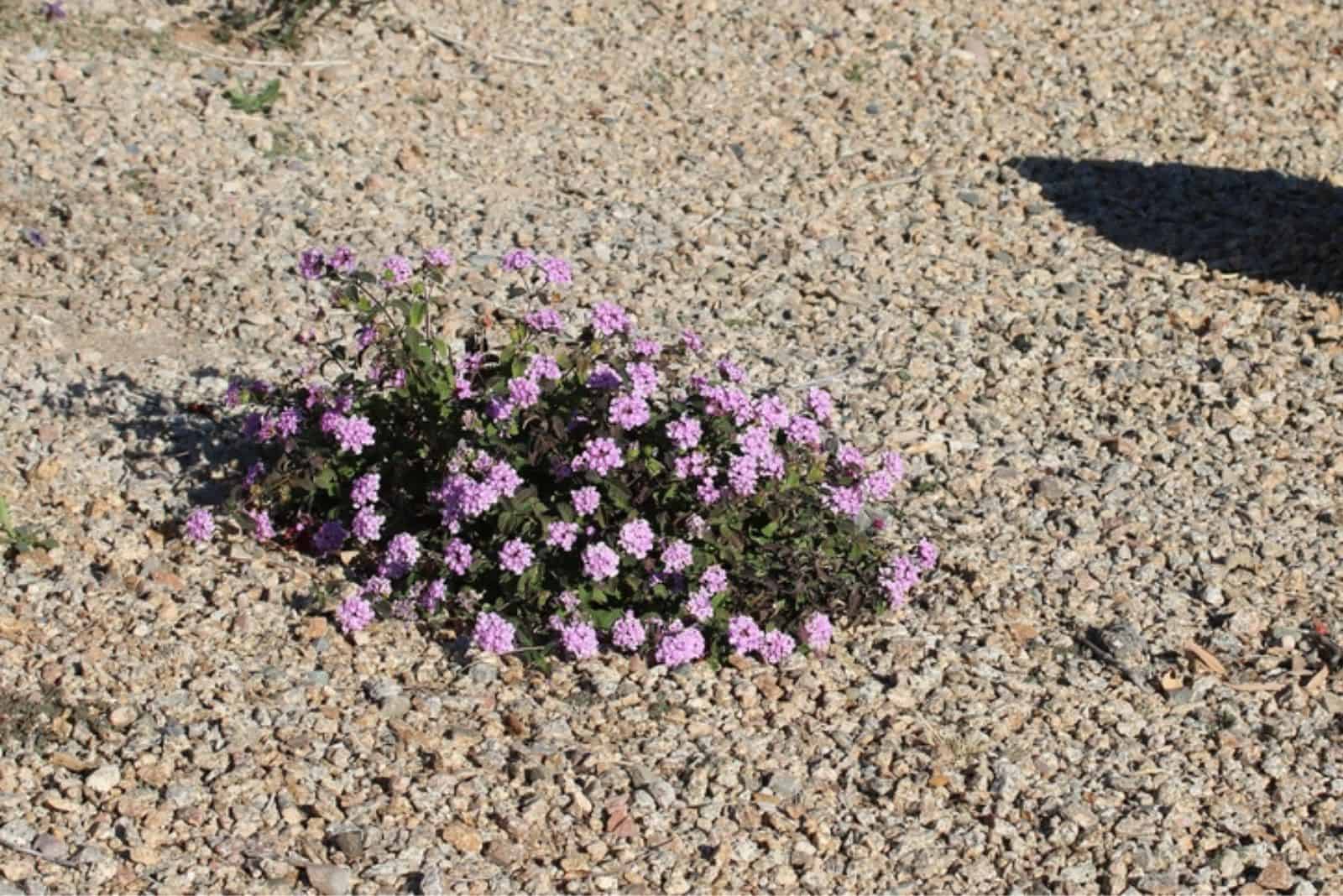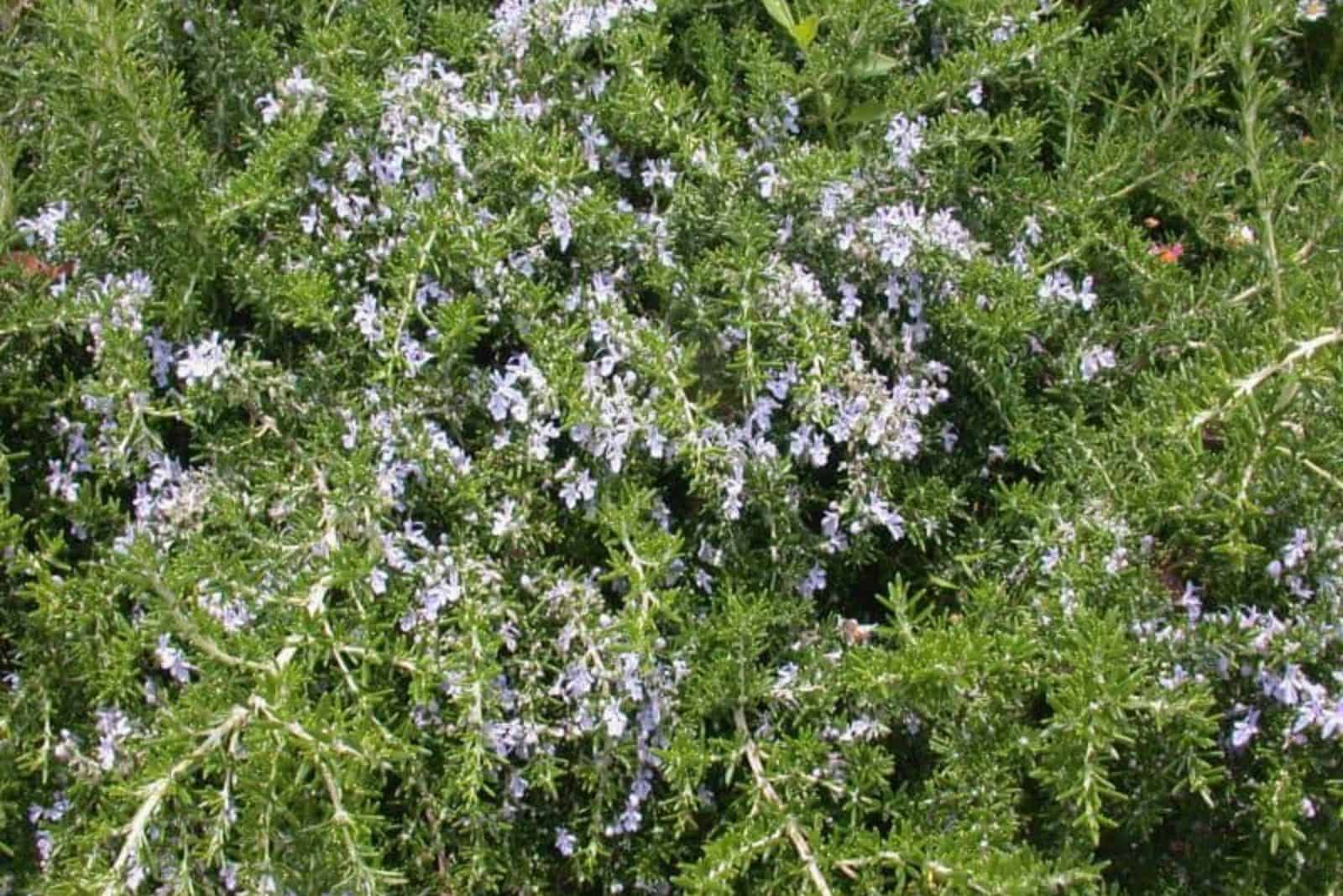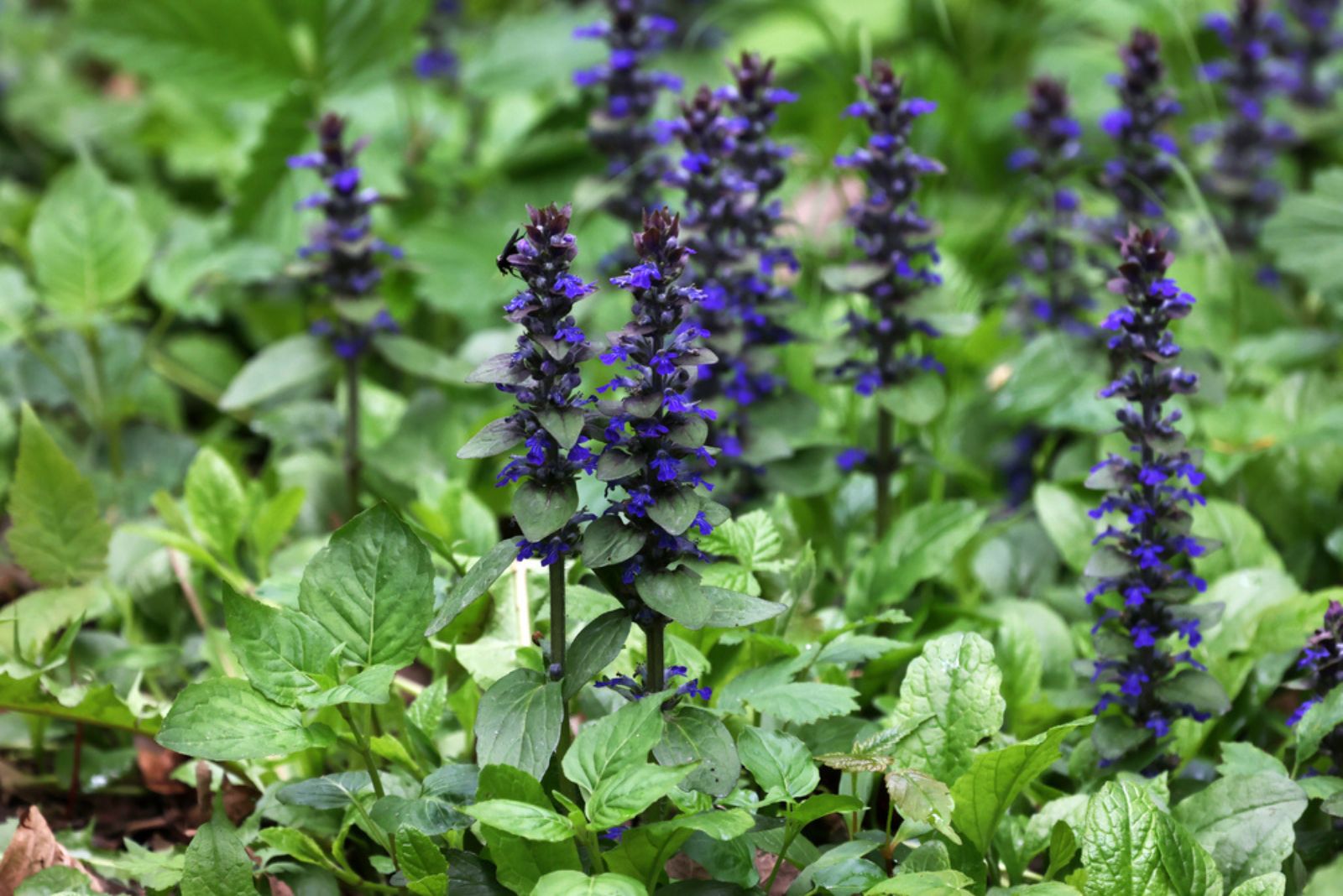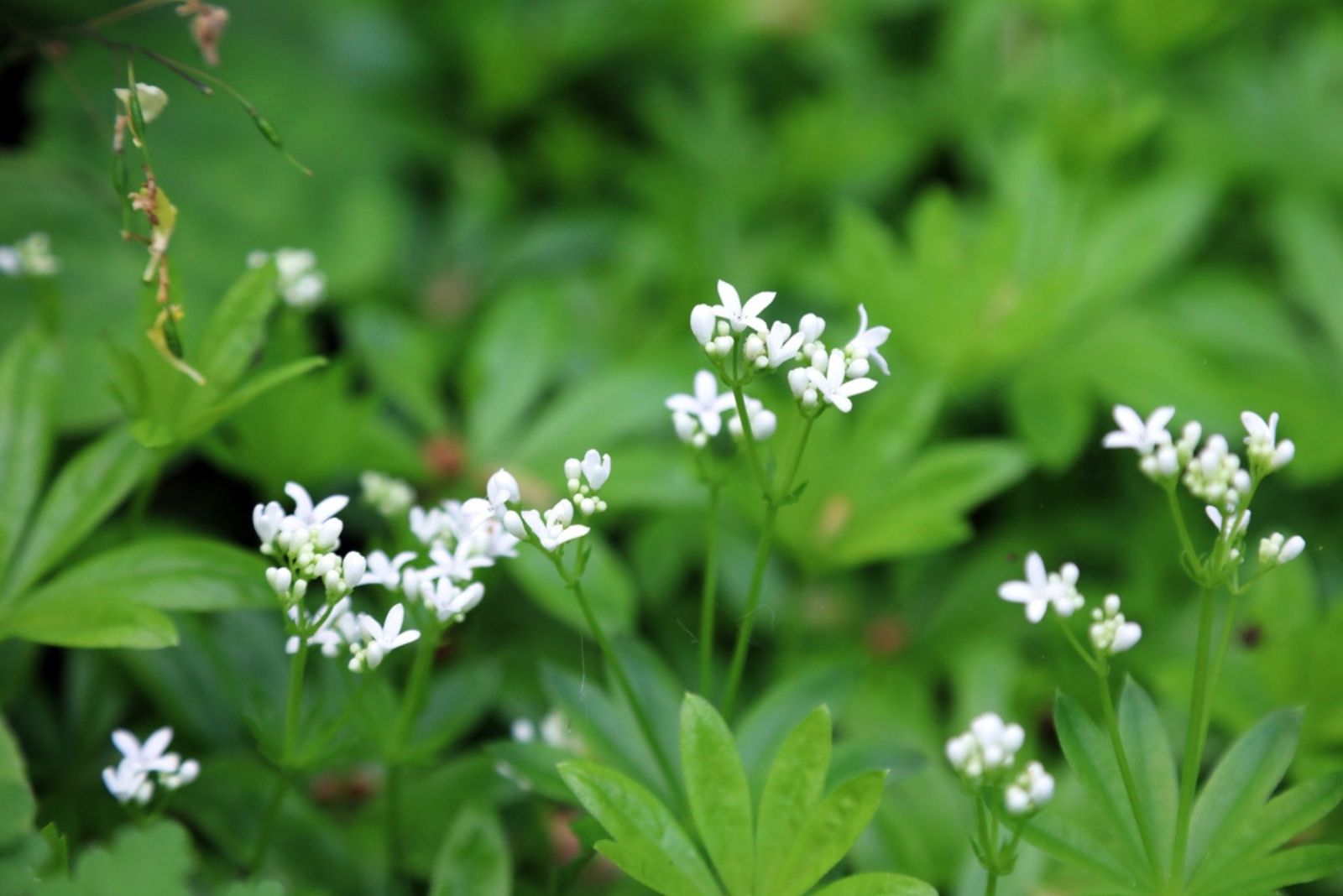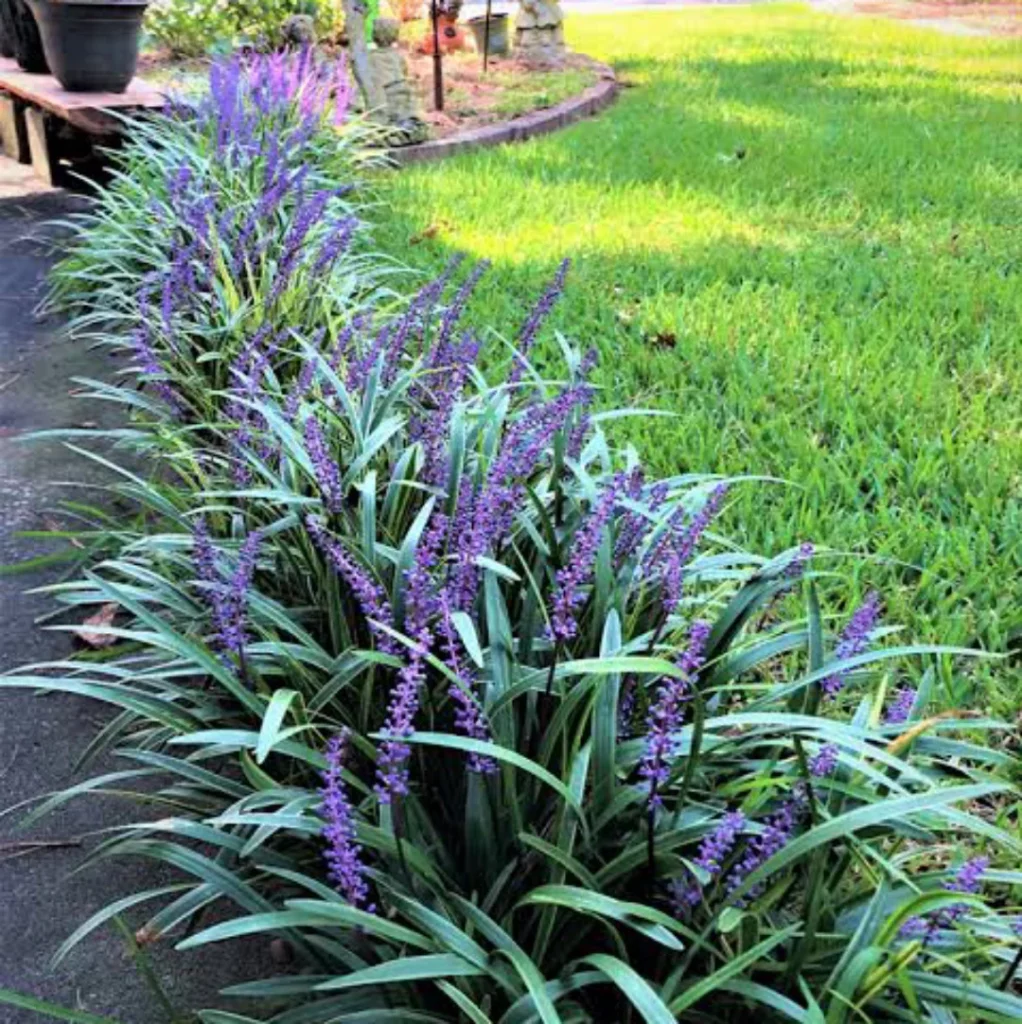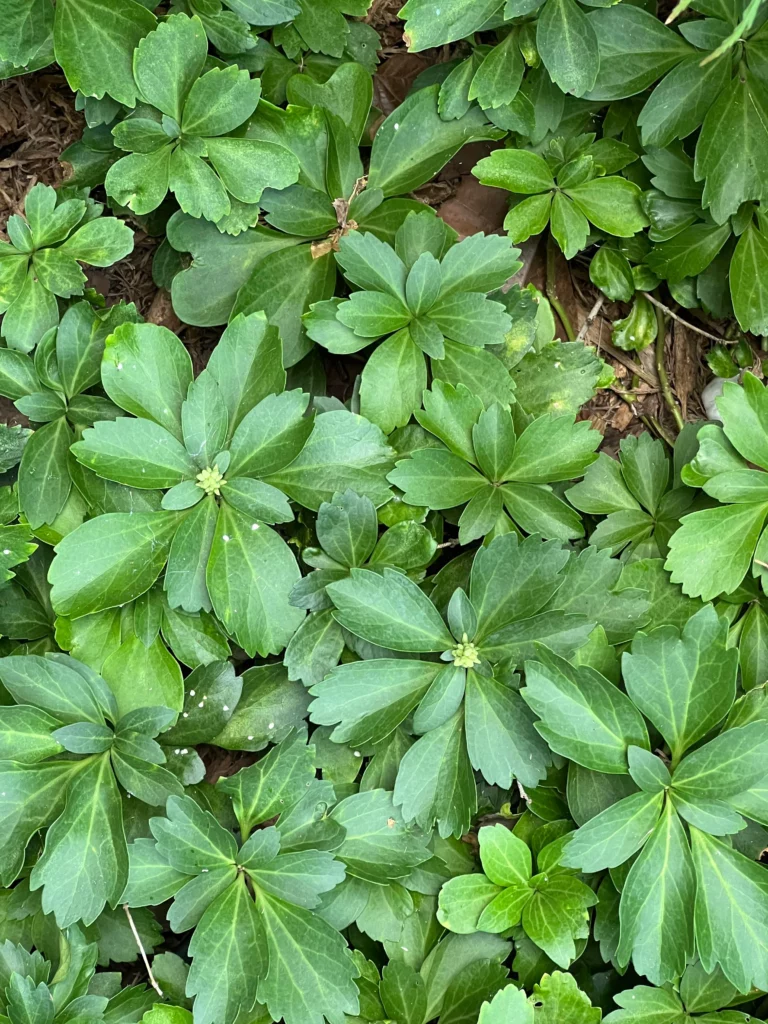Weeds are every gardener’s nightmare. Spending endless hours pulling pesky weeds out of the garden just to see them grow back again in a few days is really draining.
Well, it’s time to consider a different approach – growing ground cover plants!
These low-growing plants can spruce up your garden and prevent weeds from growing all over it at the same time. They create a dense and protective layer that chokes out unwanted weeds, thus reducing the need for constant weeding.
Say goodbye to those bothersome weeds and say hello to a lush and weed-free landscape with the help of these ground cover wonders!
1. Stonecrop
We are starting off our list with the prettiest ground cover plant. Stonecrop, commonly known as Sedum, is a low-growing succulent plant that forms a dense mat really quickly!
This mat of foliage shades the soil beneath it, which suppresses weed growth by preventing sunlight reaching the weed seeds and germinating them.
It produces fleshy, cylindrical leaves and clusters of small, star-shaped flowers. Stonecrop comes in various colors, including green, red, and purple, adding texture and interest to your garden.
Stonecrop is a low-maintenance plant that grows well in full sun and partial shade. It is drought tolerant and can handle hot, dry conditions. Frequent watering or fertilizing is not required, although the plant thrives in well-draining soil.
2. Ground Clover
Ground clover, otherwise known as Trifolium repens, is another low-growing plant that produces trifoliate leaves and small, pink or white flowers. It is a nitrogen-fixing perennial that has a tendency to spread and form a carpet-like ground cover.
Their dense foliage blocks the sunlight. These plants also form an extensive root system that helps improve soil structure and competes with weeds for water and nutrients.
Ground clover thrives in well-draining soil and can tolerate different light conditions. This hardy plant can also adapt to various soil types. Ground clover should be watered once the soil feels dry.
3. Creeping Thyme
We are now going to cover some creepers. First, let’s talk about one of the most common ground covers – creeping thyme.
This is a low-growing herbaceous perennial that spreads swiftly and produces small fragrant leaves. Besides these aromatic leaves, creeping thyme also exhibits lovely white, purple or pink flowers.
This type of thyme forms a dense, ground-hugging mat that acts as a natural weed barrier. They choke out weeds with their dense growth, and they also release chemicals that can prevent weed growth.
Creeping thyme grows fine in well-draining soil and requires full sun to thrive. Once established, creeping thyme requires minimal watering as it becomes more tolerant to drought and heat.
Be careful and control its growth because creeping thyme can become invasive in some regions!
4. Creeping Jenny
Creeping Jenny is a hardy perennial plant that forms weed-suppressing ground cover with its trailing stems and rounded, bright yellow-green leaves. Its vigorous growth habit helps to crowd out weeds, minimizing their establishment and growth.
Jenny also produces vibrant yellow flowers that can make your garden look more cheery!
Creeping Jenny thrives in full sun and partial shade. It prefers consistently moist conditions but can also tolerate occasional dry spells. Regular watering is necessary to keep the plant healthy, especially during hot and dry periods.
5. Creeping Juniper
Our next creeping plant is called creeping Juniper. This is one of the best plants for rock gardens due to its remarkable tolerance to drought.
Creeping Juniper is a low-growing shrub that produces blue-green feathery foliage. Its thick, sprawling branches cover the ground and create a barrier that inhibits weed seeds from receiving enough sunlight for germination.
Creeping juniper thrives in full sun and well-draining soil. It is adaptable to different soil types, can tolerate drought, and requires light pruning to maintain a certain shape and size.
6. Creeping Phlox
Creeping phlox, otherwise known as Phlox subulata, is yet another low-growing perennial with mat-forming growth that produces masses of small, fragrant flowers in shades of purple, pink, blue, and white.
Its sprawling growth habit and abundant foliage shade the soil, limiting weed seed germination. Their dense mat also helps to smother emerging weeds and prevents them from establishing.
Creeping phlox grows well in both full sun and partial shade. It is relatively drought tolerant, although it appreciates some watering during dry spells. Pruning after flowering helps to maintain shape and also encourages more vigorous growth.
Read also: How To Take Care Of Creeping Phlox In Winter
7. Irish Moss
Irish moss is a low-growing perennial plant that produces tiny, bright green, moss-like leaves that form a dense carpet-like appearance. Additionally, this plant also exhibits small, delicate white flowers that add a touch of elegance to the scenery.
Due to their compact and dense growth, Irish moss does a great job in suppressing weed growth. Its vigorous growth habit quickly covers the ground, leaving little space for weeds to establish!
Irish moss grows perfectly in soil that drains well. It also grows well in full sun to partial shade. It prefers slightly acidic to neutral soil pH levels. Regular watering is required to maintain its lush appearance.
Be careful not to overdo it because these plants are prone to root rot.
8. Trailing Lantana
Trailing lantana is considered as one of the best weed-killing plants.
This is a perennial flowering plant that produces small clusters of flowers in shades of pink, purple, white, or lavender (depending on the cultivar). These flowers have mesmerizing fragrances that are great for attracting pollinators.
Trailing lantana is an excellent ground cover plant that helps prevent weed growth. Its trailing stems cover the ground quickly and form a dense mat of foliage that shades the soil.
This perennial is drought tolerant once established. It thrives in full sun and soil that drains well. Some water is required during an extended period of drought. Pruning can be done to encourage bushier growth.
9. Trailing Rosemary
We are ending our list with a lovely evergreen shrub that features aromatic, needle-like leaves and small blue flowers during the blooming period. Trailing Rosemary is valued for its culinary uses as well as its ornamental appeal.
However, trailing rosemary also does an amazing job preventing weed growth. Its trailing habit and sprawling branches create a natural ground cover that shades the soil and reduces weed establishment.
The strong fragrance of the rosemary leaves also deters certain pests and insects that would otherwise damage your garden!
Trailing rosemary thrives in full sun and well-draining soil. Pruning should be done after flowering to promote vigorous growth. Once established, the plant requires minimal watering.
10. Ajuga
A bold and fast-spreading ground cover, this plant is perfect for creating a dense, colorful carpet in any garden.
Ajuga, also known as Bugleweed, features rich, chocolatey leaves and striking blue flower spikes that add both texture and vibrancy to your landscape. It thrives in both sun and partial shade, making it a versatile option for various garden spaces.
This resilient perennial spreads quickly, helping to fill large areas and suppress weeds. Its low-growing habit makes it ideal for borders, pathways, or underplanting shrubs.
Once established, Ajuga is low-maintenance and adapts well to different soil types. Occasional pruning can keep it looking tidy and encourage fresh growth.
11. Sweet Woodruff
A delicate and fragrant ground cover, this plant brings charm and softness to shaded spaces.
Sweet Woodruff features star-shaped leaves and tiny white flowers that form a lush, carpet-like spread in woodland settings. Its gentle fragrance makes it a favorite for scented gardens, adding a refreshing touch to outdoor spaces.
This fast-spreading perennial is perfect for covering large areas, effortlessly filling shaded beds and spaces beneath trees. Its ability to thrive in low light makes it a reliable choice for woodland gardens.
Once established, Sweet Woodruff requires little maintenance and flourishes in moist, well-draining soil. Its soothing scent and delicate beauty create a serene, inviting atmosphere in any garden.
12. Liriope
Known for its adaptability and hardiness, Liriope is a versatile ground cover that thrives in both sun and shade. Its long, grass-like foliage and delicate lavender or white flower spikes add elegance to any garden.
Forming dense clusters of leaves, Liriope acts as a natural weed barrier by shading the soil and reducing weed seed germination.
Once established, it is drought-tolerant and prefers well-draining soil. Liriope is perfect for borders, underplanting, or along paths, requiring minimal maintenance. It can be pruned back in early spring to maintain a neat appearance.
13. Pachysandra
An evergreen ground cover, Pachysandra thrives in shady conditions, forming a thick mat of glossy, dark green leaves that effectively block weeds and prevent their growth. In spring, it produces small white flowers, adding a subtle beauty to shaded garden areas.
Perfect for woodland gardens or low-light spots, it prefers moist, well-draining soil and does best in partial to full shade.
While it can tolerate drought once established, it flourishes with regular watering, especially during dry spells. Its dense, spreading growth makes it ideal for covering large areas under trees or along garden edges.

